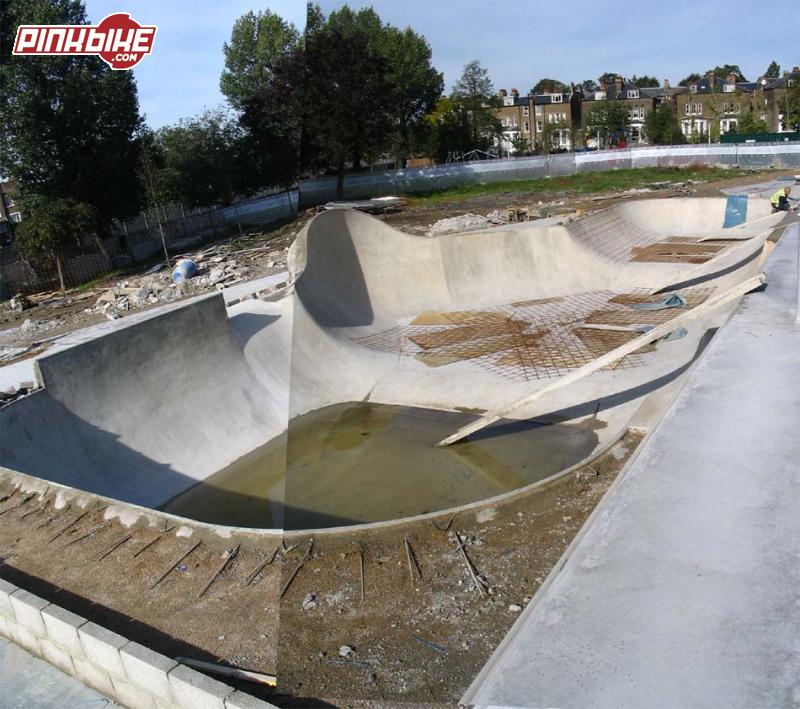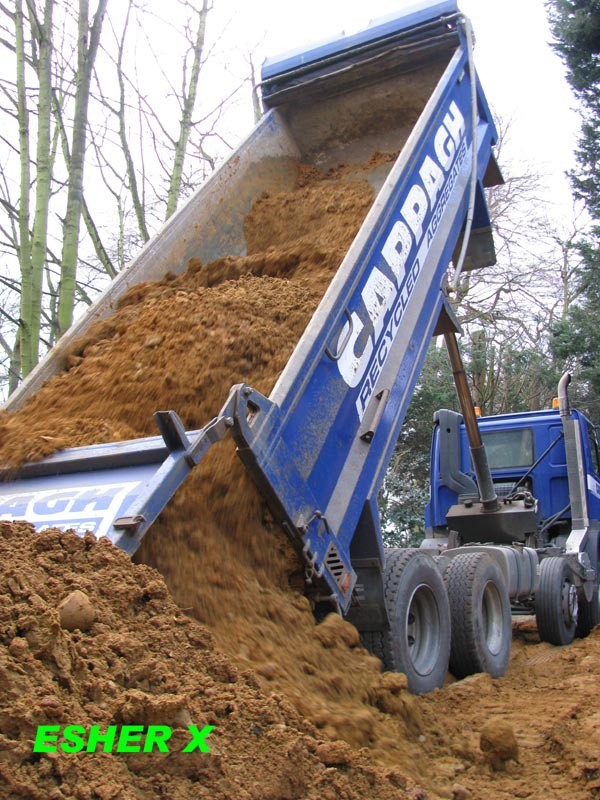- This topic has 19 replies, 13 voices, and was last updated 8 years ago by scu98rkr.
-
Trail Building – Clay question …Chemist wanted….
-
samunkimFree MemberPosted 9 years ago
Most of our local hard built trail features have been reduced to a slimy gloop during the course of the winter. Is the anything we can use to “Cure” the clay when we rebuild in the spring. Heard of places using wall paper paste to armour sand and a bit concrete added when building trails on gravel.
Anyone got any ideas about clay
towzerFull MemberPosted 9 years agobit ot (and possibly not a good idea) but what about the mesh/grid they use to reinforce grass for car parking
ScienceofficerFree MemberPosted 9 years agoCement1 1-5%.
You may not like the amount of processing required to adequately mix it though.
samunkimFree MemberPosted 9 years agoI already get some funny looks when I unload my shovel,Tarp & Kitbag from the car, I imagine a bag of lime would really get the ramblers mobilephones twitching (which is weird cause everone knows the best time to bury bodies is about 3am …Ho-hum)
So its going to have to be the concrete. I reckon if we only use it to cover/waterproof the top inch or so and stamp it in as part of the mixing, this will work..Cheers Guys
mugsys_m8Full MemberPosted 9 years agoDON’T add concrete or lime. Whilst they might work you will be altering the environment of the area. The lime especially could cause real issues for flora. Your best bet is to improve the drainage measures.
Clay is clay, you might treat the top 10cm but underneath it will be more clay. Issues aside the normal way to provide a pavement would be exacavte,replace with granular and/ or use geo-grids etc.
eshershoreFree MemberPosted 9 years agodon’t bother doing 1″ of concrete, it just cracks the first time you put pressure on the trail
I tried this years before and ended up with ‘pancakes’ of broken concrete everywhere, as mugsys said it also has a very detrimental effect on the local environment
if you look at how something like a skatepark is built from concrete, it involves a huge amount of prep work with rebars and ties to keep the structure stable enough to support the concrete, the concrete is very thick
molgripsFree MemberPosted 9 years agoFire roads use limestone don’t they? This then packs down into a firm surface, but I think it gets some heavy duty rolling then depends on the action of trucks etc to bed in.
If the soil is clay, can’t you do what gardeners do and add sand? Possibly not detremental to the local environment – on my clay trails at least, the sand is present in the soil but it washes out of the trails and collects where the puddles sit. You could just use that and redistribute it.
scu98rkrFree MemberPosted 9 years agoA very long term solution. But plant some conifer trees near by ?
The soild is very clay-ey near me, but I notice the areas with the Confer trees are much drier and they evenutally seem to alter the soil some how. Make it more brittle and better draining.
Also I think the needles dropping make it alot more acidic and the dry needles seem alot better to ride on that the yearly drop of leaves from decidious trees.
Im 100% that its not the soil is different where the conifers are but that it is the confiers that change it as you can see the effect in a very small area.
Might not be much use for you, but it you stay in the area ur kids might benefit.
molgripsFree MemberPosted 9 years agoDead needles don’t mulch down very well, so they do have a lovely way of binding soil together into a springy surface. Good idea. See if you can get hold of tons of needles 🙂
Vegetation does change the soil btw. Soil is made of clay, sand and compost from the vegetation, so it’s bound to.
mugsys_m8Full MemberPosted 9 years agoI think some people need to go on a geotechnical engineering course… 😀
eshershoreFree MemberPosted 9 years agowhen we tried to build ‘Esher X’ bike park on the site of the Esher Shore bike park, the first duty was to build a ‘metalled’ road suitable for the fleet of lorries bringing 20 tonne loads of hoggins to the site.
This was a huge task. It involved us stripping out the existing loam to a depth of 3 foot, then filling with a base of sand, then tonnes of crushed rock, which was spread by hand, and then compacted using a ride-on powered roller.
After this, I would never take a fireroad for granted, ever again!
smatkins1Free MemberPosted 9 years agoBringing in anything like cement or sand is not going to go down well with anyone. Some sands have a high sat content which the local plants won’t thank you for.
I’m sure there is some granular material nearby you could dig up and move to your trails if you want to use this. Chucking this on top of your clay trails will help armour them. As it sinks in with use add more.
As mugsys_m8 has mentioned drainage is your best solution. Wherever water collects, provide a route for it to drain away.
The local trees and plants will help with removing water from the ground. So please don’t kill them with sand and cement.
samunkimFree MemberPosted 9 years agoWow that escalated quickly
I think you guys are overestimating the scale of our local setup. Its really only a few 4ft berms and a half dozen jumps across a massive mature woodland. Not going to be laying down a hardpack trail centre, was just looking to make the clay “bind” better. I will chuck a bucket of lime at it in the spring and report back.
There’s an ex FComm wood next door so may try some pine needles as wellTa.
ScienceofficerFree MemberPosted 9 years agoLook up soil solidification/stabilisation on tinternet.
At the concentration I’m talking about, you won’t get anything like concrete or indeed, any kind of monolithic structure and there will be plenty of buffer capacity in the clay to limit pH problems. What it does is interact with the aluminosilicates in they clay. After a bit of heave (depending on sulphate content primarily) you end up with clay that’s had its moisture chemically bound and is quite receptive to being treated like an aggregate (compacted etc), without actually being one. Tbh, it’s perfect for stabilising berms.
Water management is your number one factor to consider at all times though.
robj20Free MemberPosted 9 years agoIMO if your doing this somewhere you really shouldn’t be, its best to use what’s around you don’t add anything from afar.
legendFree MemberPosted 9 years agoI’m watching this thread with interest as I’ve got a similar problem with the wee pump track I’m building in the back garden. Given that it’s on my land I’d be happy with all kinds of chemicals 😉
The topic ‘Trail Building – Clay question …Chemist wanted….’ is closed to new replies.



